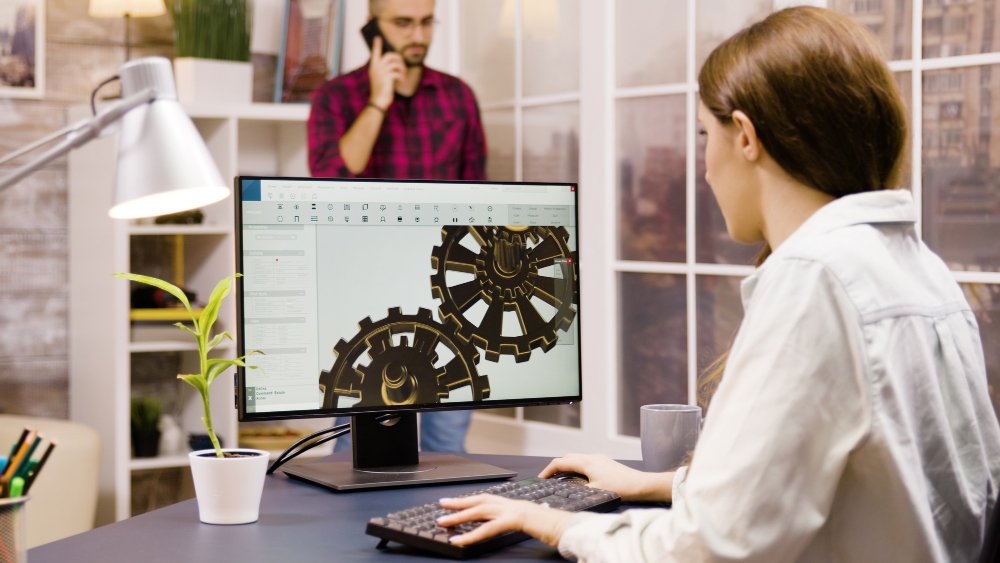Creating 3D models can be a complex and time-consuming process, but with the right techniques and tools, you can streamline your workflow and produce high-quality results more efficiently. Here are some simple tips to help you improve your 3D modeling workflow, from a professional 3D rendering software and animation company.

Post Contents
Get Familiar with the Software Interface
One of the most important steps in improving your 3D modeling workflow is to become thoroughly acquainted with the software you’re using. Take the time to explore the interface, locate essential tools, and understand how they function. Investing effort in learning the basics will boost your confidence and productivity when working on complex projects. Don’t hesitate to consult tutorials, user guides, or online communities to deepen your understanding of the software.
Recognize the Significance of 3D Assets
3D assets, ranging from small background props to main characters, play a crucial role in your projects. Understand the importance of each asset and consider how much detail is required based on its prominence in the scene. A viewer or gamer will spend more time focusing on certain assets, so allocate your time and effort accordingly. Conduct thorough research and gather reference images related to the assets you plan to create to ensure accuracy and efficiency in your modeling process.
Utilize Shortcuts for Efficient Modeling
Most 3D modeling software offers a variety of shortcuts that can greatly enhance your workflow. Familiarize yourself with these shortcuts and incorporate them into your daily modeling routine. If your software allows customization of the workspace, take advantage of this feature by placing your most frequently used tools within easy reach. Additionally, consider using pre-made textures, scenes, and objects available online to save time and effort.
Employ the Right Software and Start with Basic Models
When starting a new project, choose the best 3D modeling software that suits your needs and begin by building basic models. Box modeling is an excellent technique for beginners, as it allows you to sculpt and refine simple shapes into the desired assets. As you progress, subdivide the model into polygons (quads) to add details and refine your work. Regularly review your model to ensure that the polygons are as square as possible and do not exceed four edges for optimal results.
Enhance Your Models with Effective Lighting
Lighting plays a critical role in making your 3D models look professional and realistic. Advanced software often includes a “create light” button, but taking the time to add lights manually can elevate your model’s appearance. Use reference images to understand how objects are typically lit and experiment with different lighting techniques such as Omni lighting for bulbs, directional lighting for distant sources like the sun, and spotlighting for showcasing specific areas. Online tutorials can provide valuable guidance on effectively lighting your 3D models and scenes.
Continuously Explore and Discover New Techniques
To truly excel in 3D modeling, dedicate time to studying the software thoroughly and exploring its various functionalities. Experiment with different tools and settings to understand their impact on your models. Create copies of your work to test out new techniques without fear of losing progress. By continually learning and discovering new approaches, you’ll expand your skill set and find innovative ways to enhance your 3D modeling workflow.
Master the Art of 3D Texturing
3D texturing is the process of making your models more realistic by focusing on lighting and changes in texture. Different materials react uniquely to light, so it’s essential to research and understand how your assets would appear in the real world. Utilize 3D texturing software to create and manipulate procedural text maps, allowing you to reflect various materials accurately. Save and reuse these assets across projects to save time and maintain consistency.
Leverage the Power of Referencing
Referencing, also known as instancing, is a powerful tool that allows you to clone a single model multiple times, simplifying the creation of complex background scenes such as forests or cityscapes. By using clones instead of unique objects, you can reduce the computational power required for rendering. Collaborative work becomes more efficient as well, as external instances can be easily shared and modified. When creating buildings or other repeating structures, clone the base models and create different meshes to ensure consistency throughout your project.
Streamline Your Rendering Process
Rendering is the final stage where you’ll see how your 3D creations will appear in a game or video. 3D rendering software offers render presets that can be customized by artists to achieve diverse outcomes based on specific requirements. Take the time to understand the shading process and explore techniques like high dynamic range imaging (HDRI) to influence the final look of your model. Determine the resolution and size of your 3D assets to get a clear idea of what the outcome will be.
Reach Out to a 3D Rendering Software and Animation Company to Learn More About How You Can Improve Your 3D Modeling Workflow
Improving your 3D modeling workflow is an ongoing process that requires continuous learning and exploration. If you’re looking to take your skills to the next level, reach out to a professional 3D rendering software and animation company for valuable insights, training, and support to help you optimize your workflow